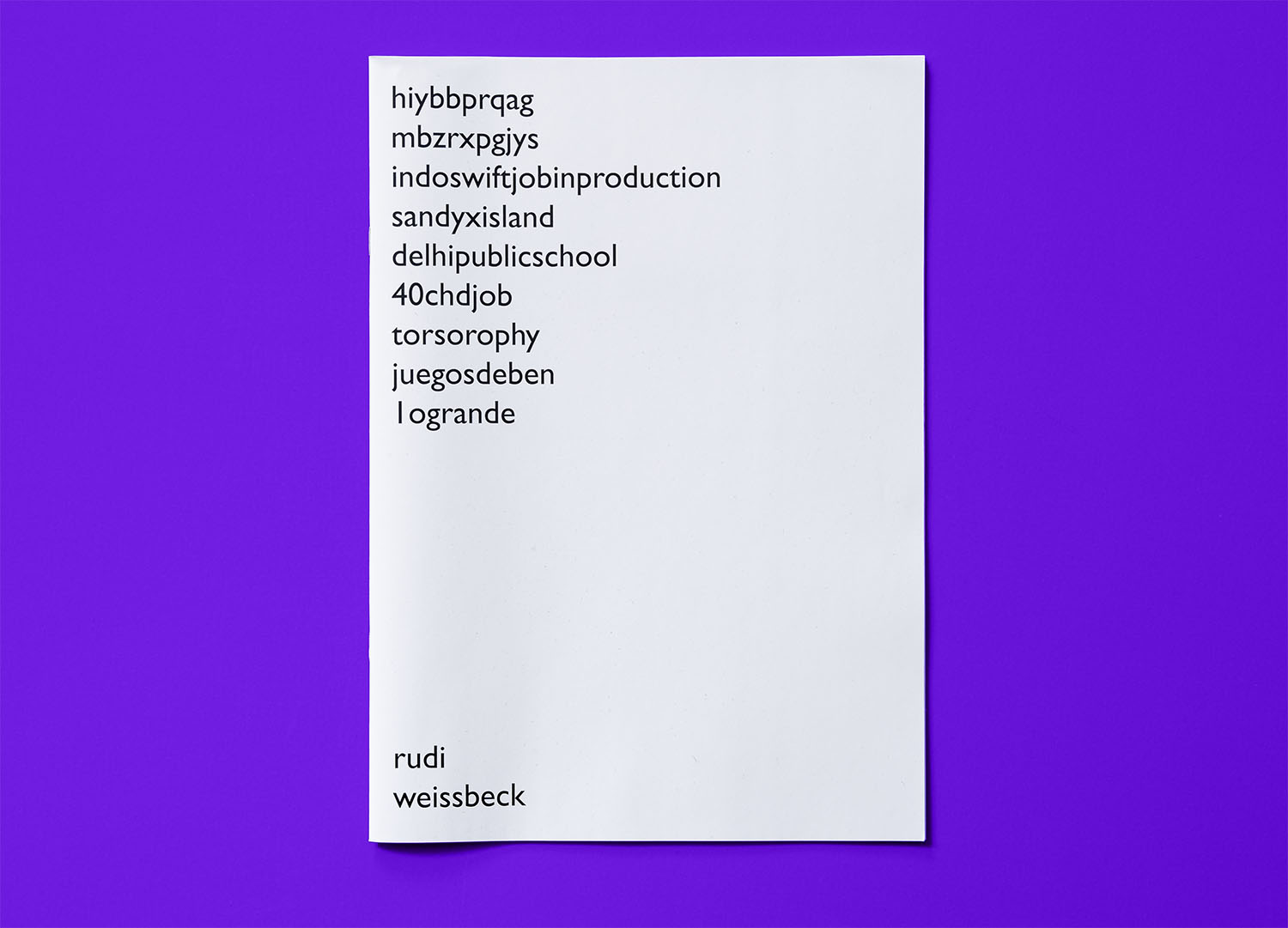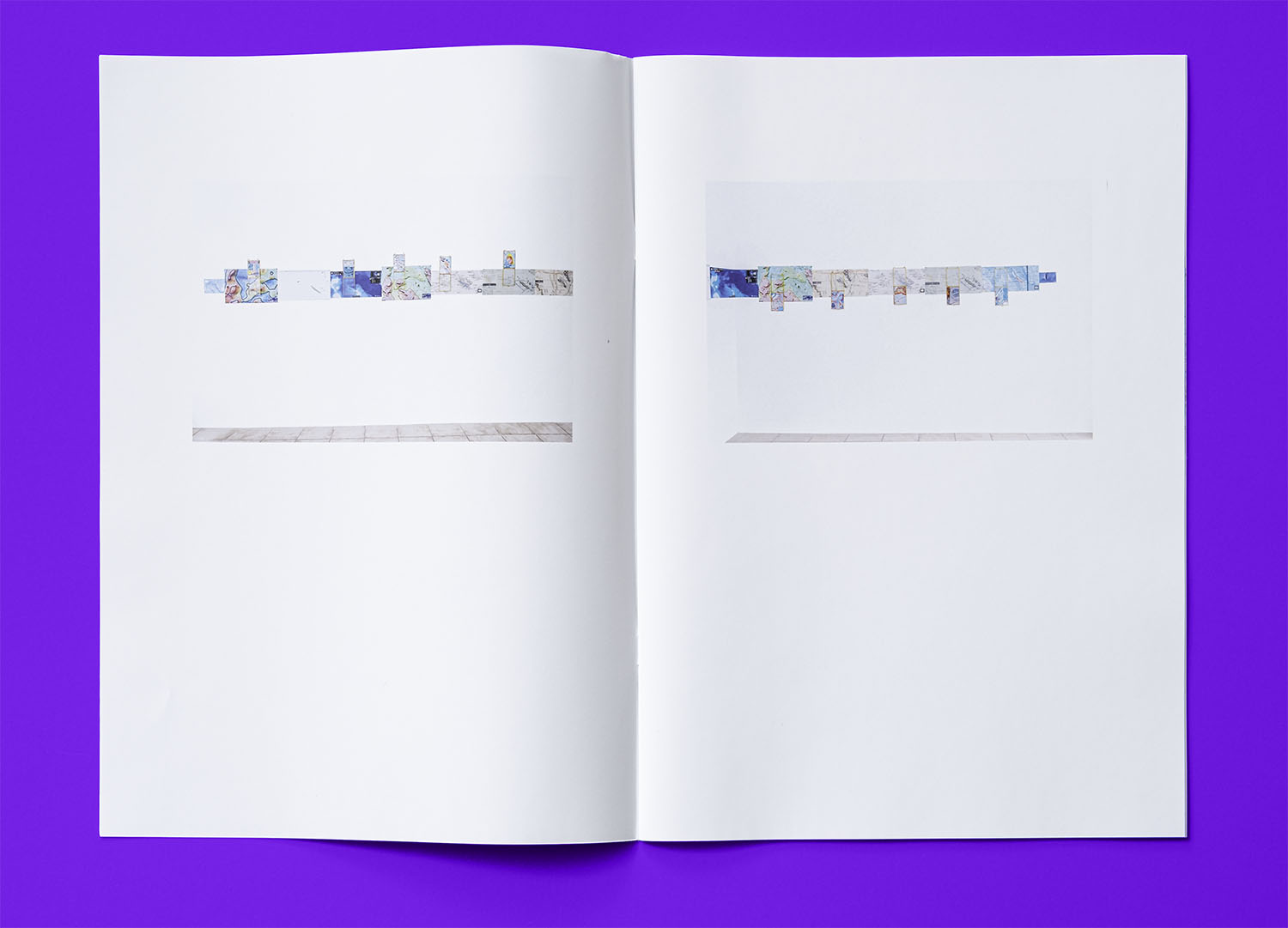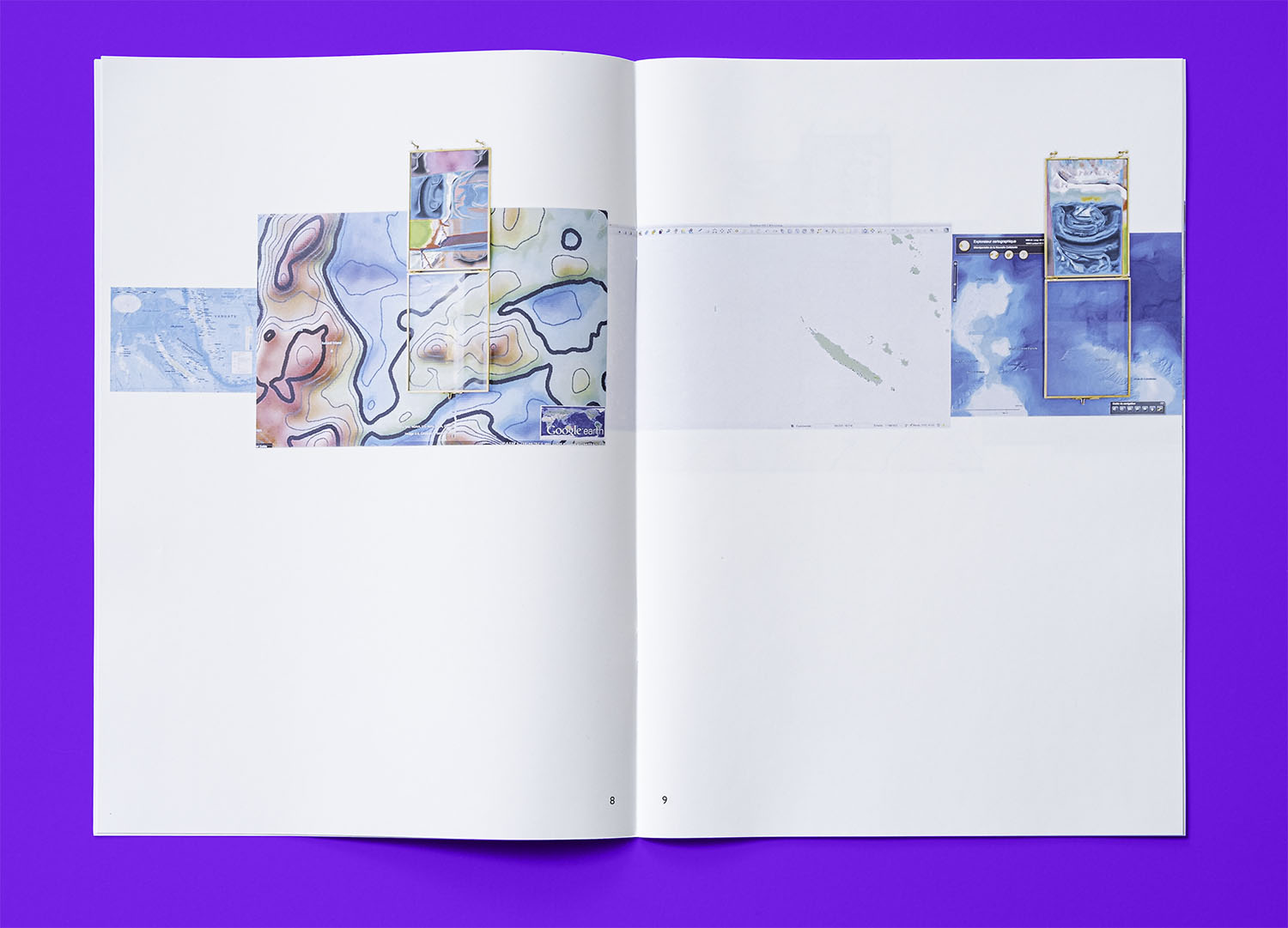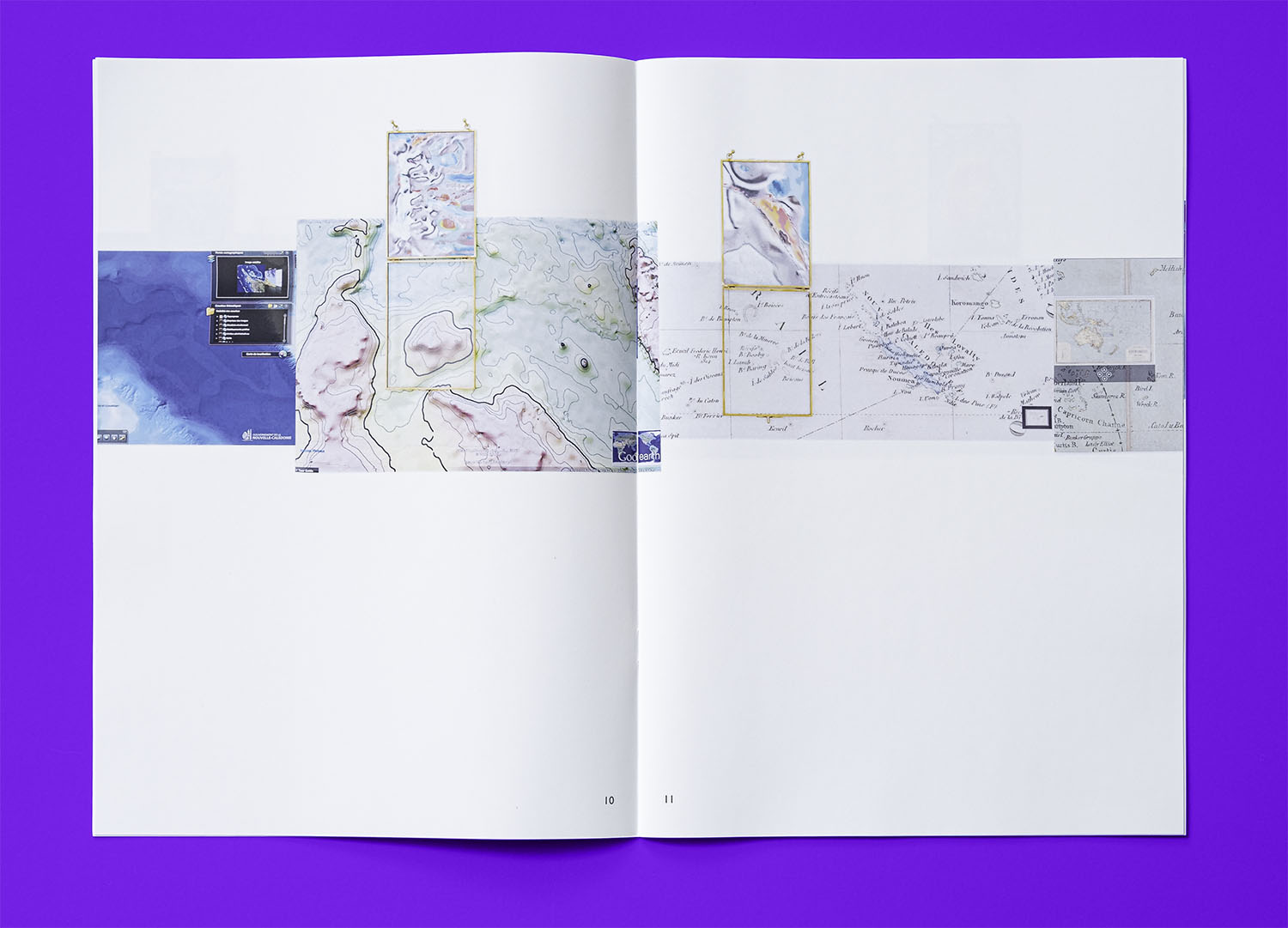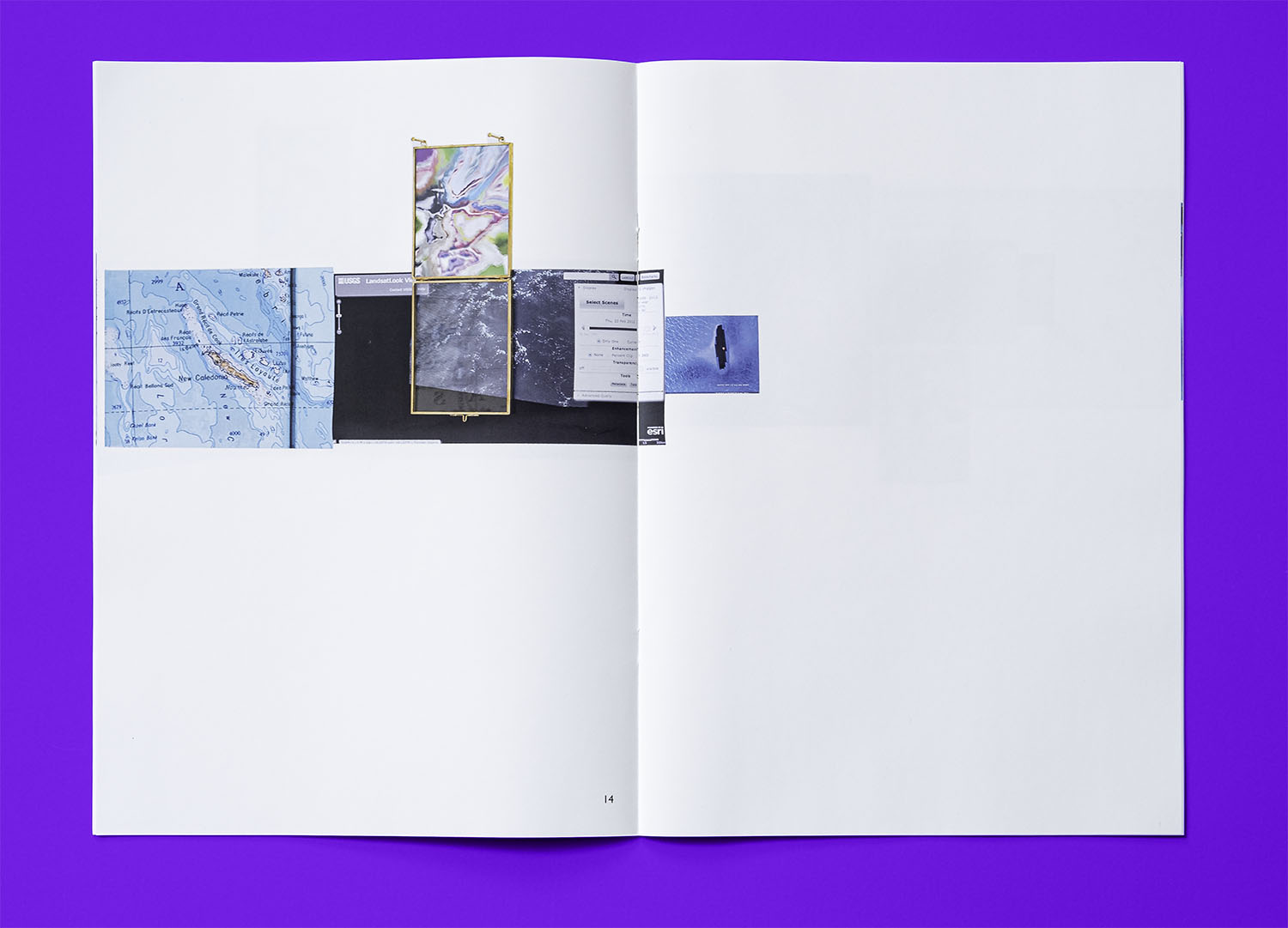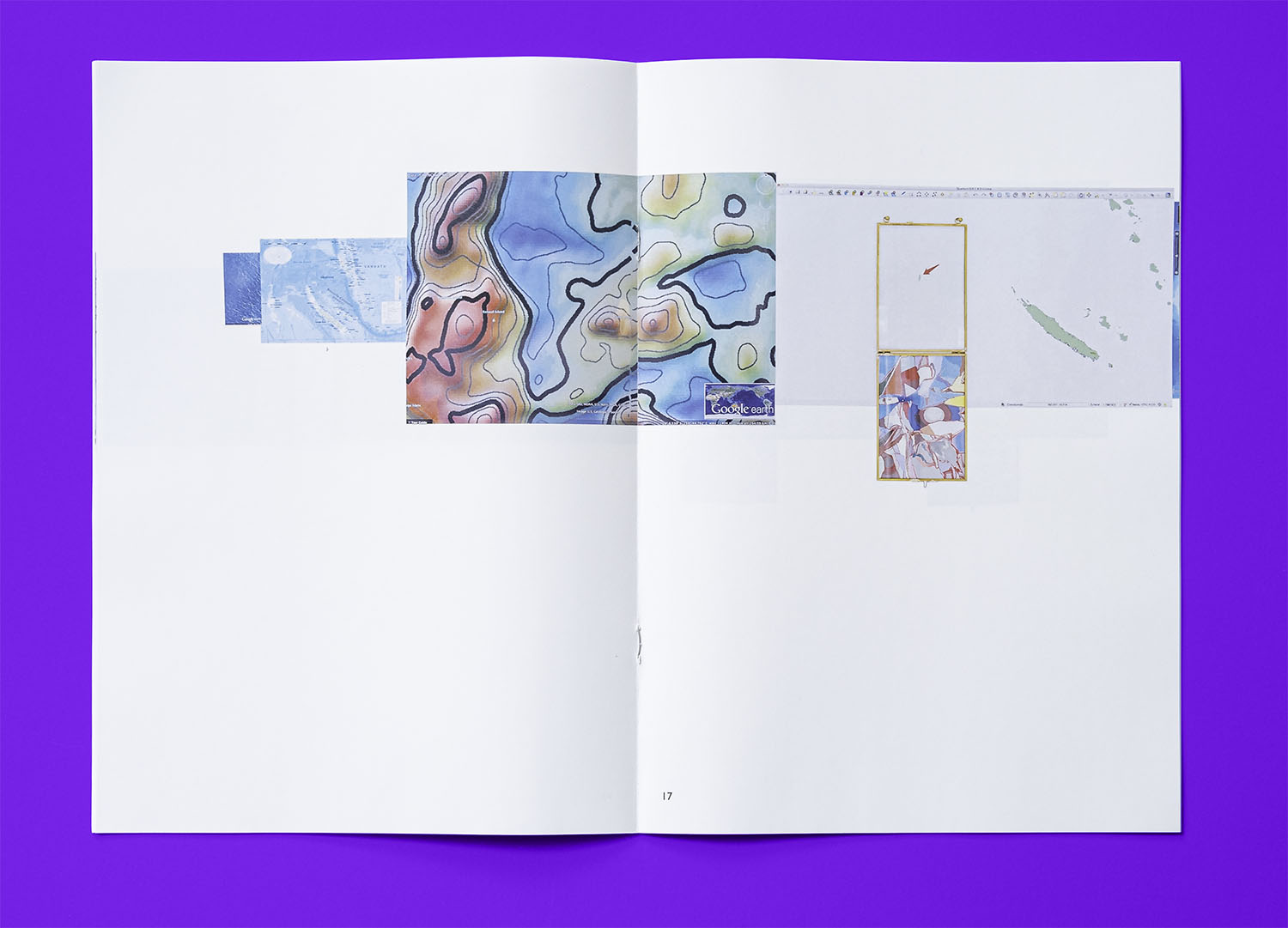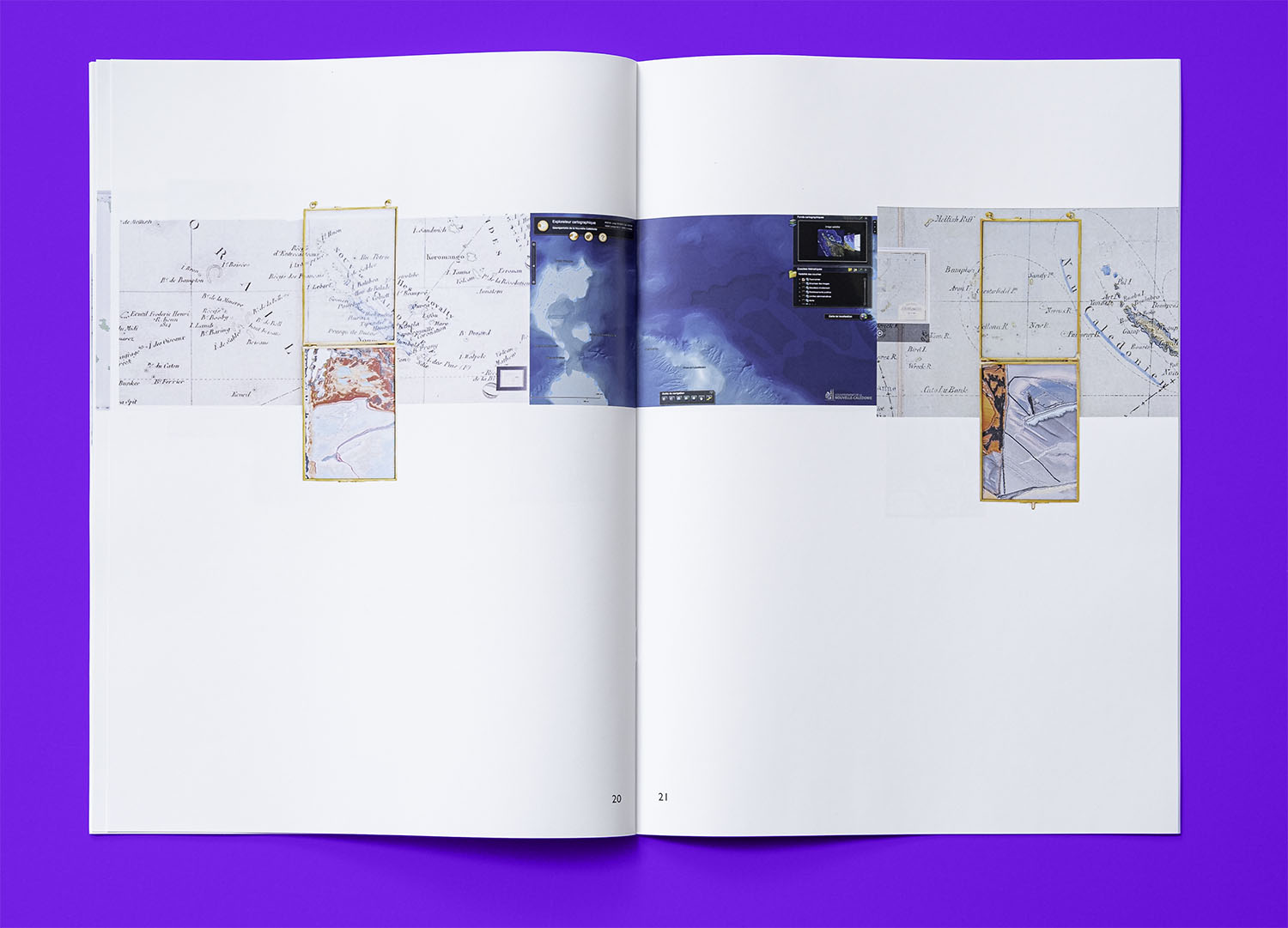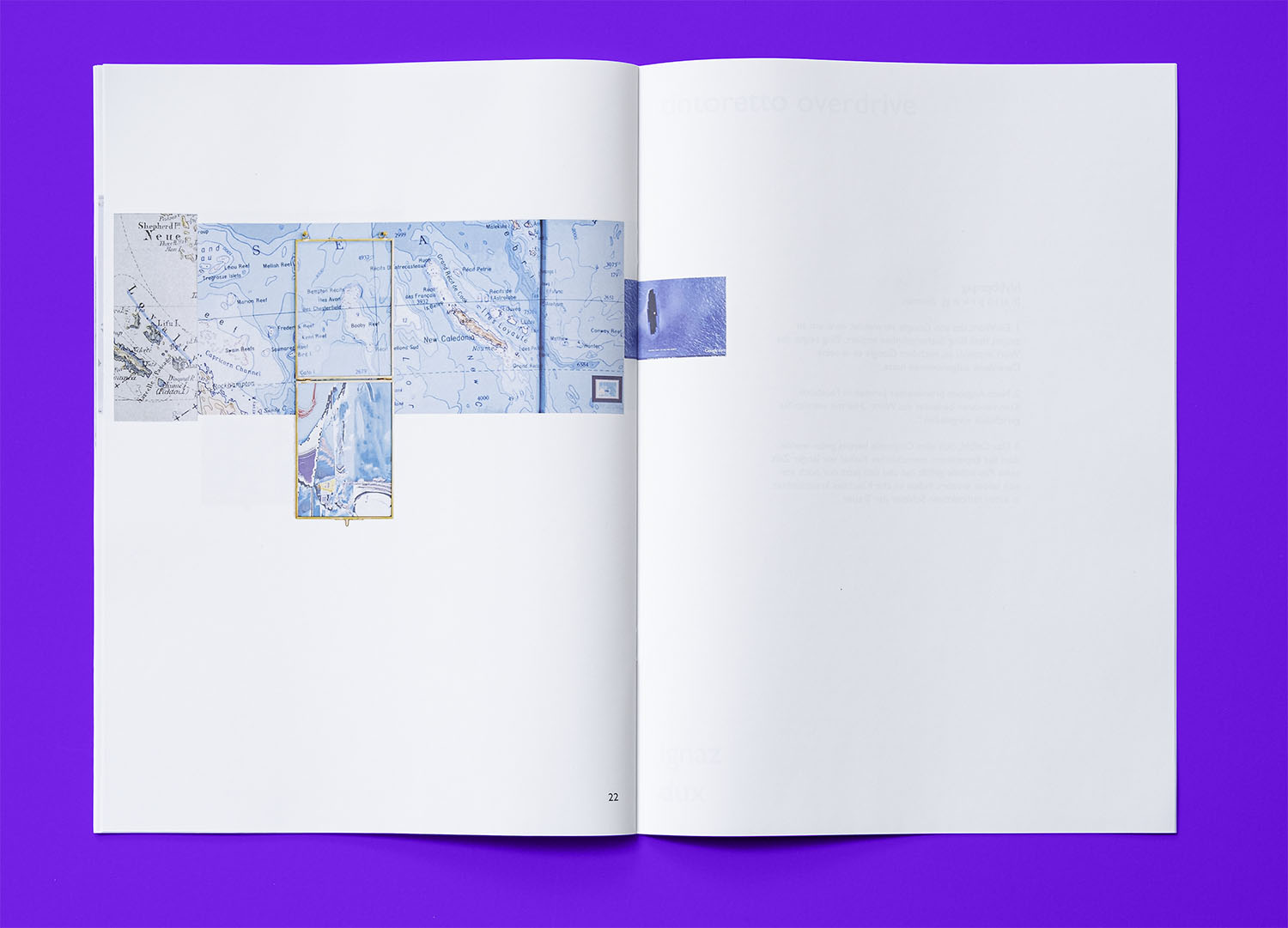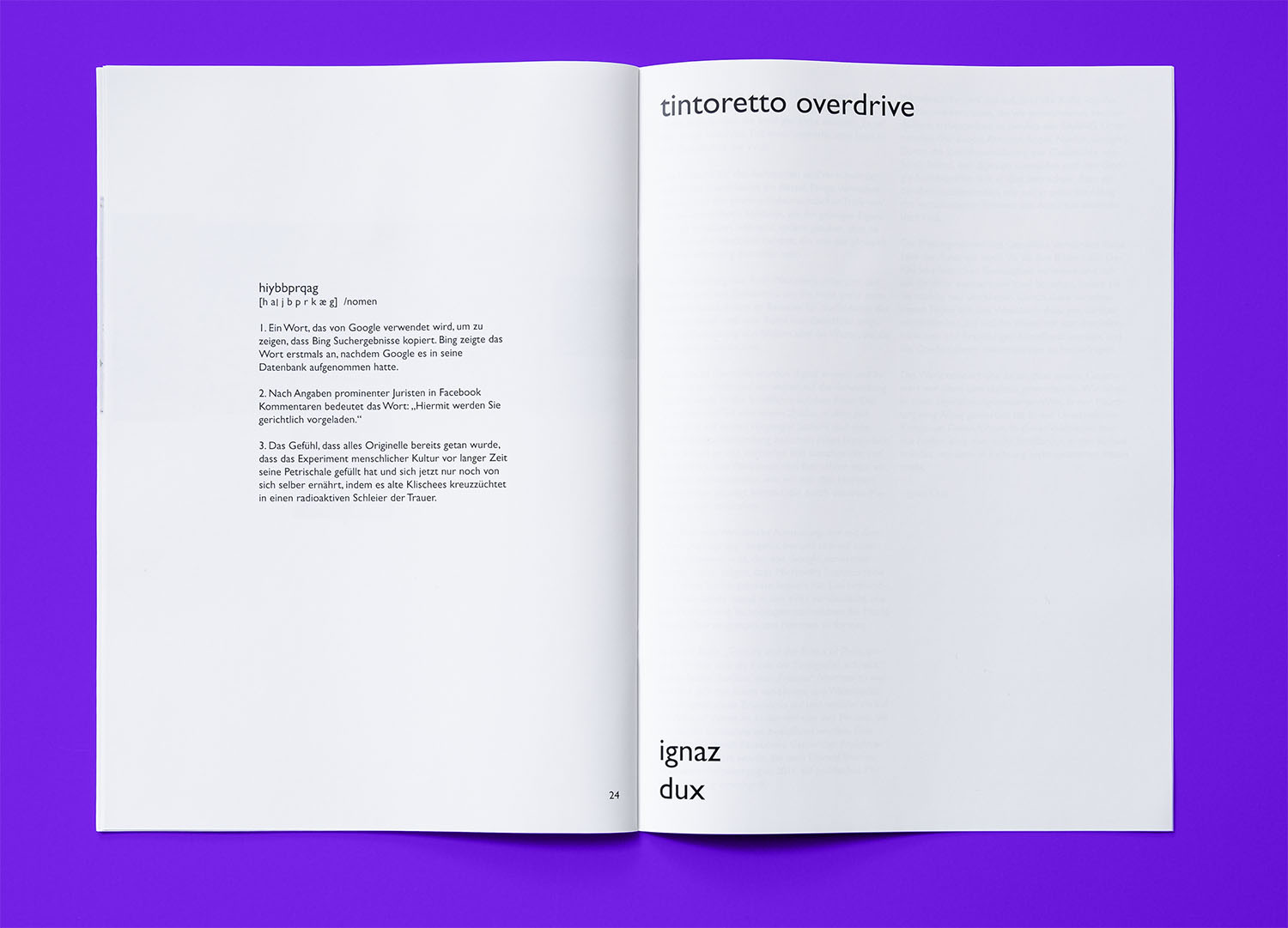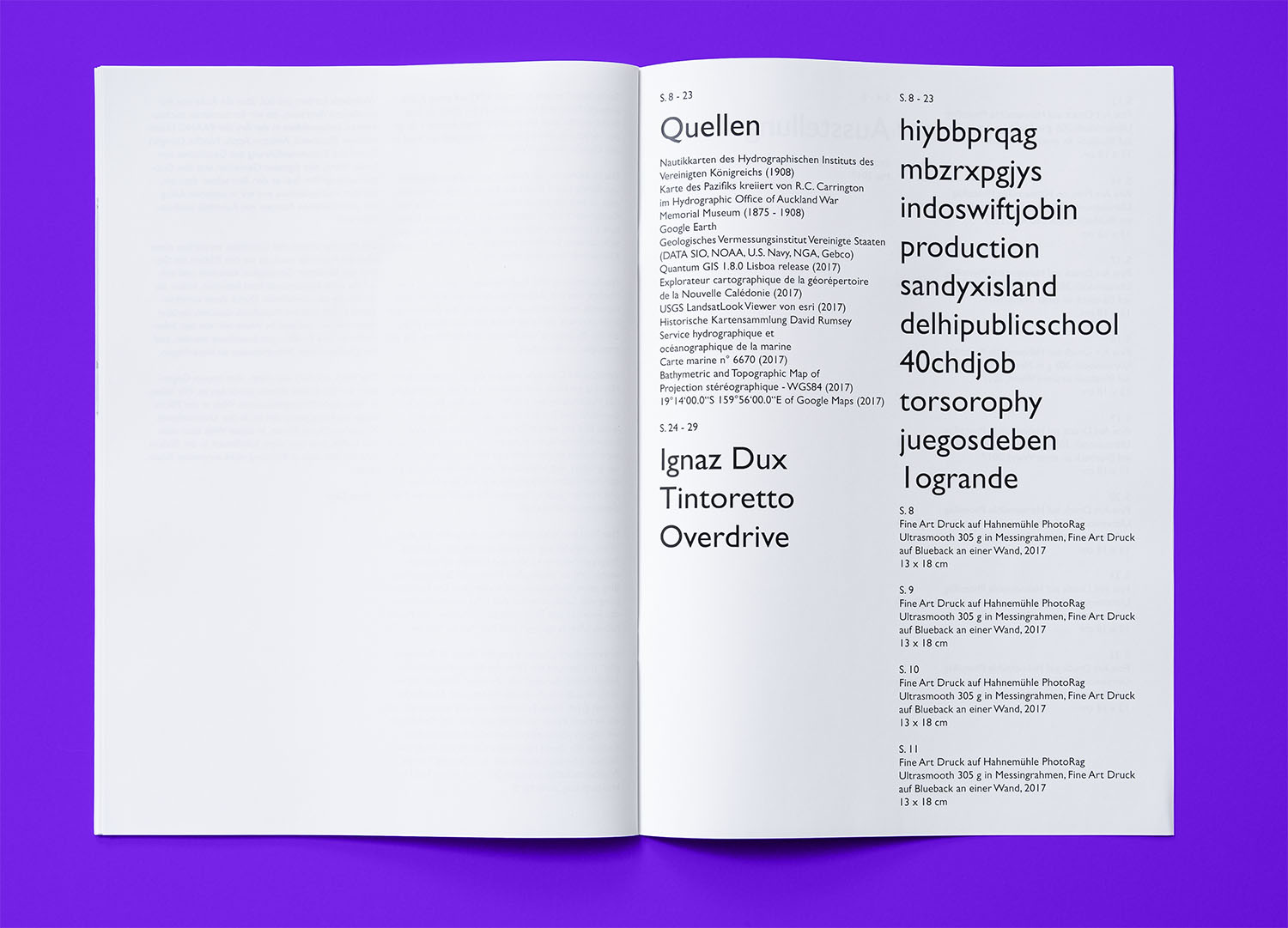hiyybbprqag
mbzrxpgjys
indoswiftjobinproduction
sandyxisland
delhipublicschool
40chdjob
torsorophy
juegosdeben
1ogrande
hiyybbprqag
mbzrxpgjys
indoswiftjob
inproduction
sandyx
island
delhipublic
school
40chdjob
torsorophy
juegosdeben
1ogrande
Archival study, digital painting, publication
Installation view, Warte für Kunst, Kassel (DE), 2017
17 appropriated maps on blueback up to 30 x 40 cm
12 digital paintings framed in brass, 13 x 18 cm
Installation view, Warte für Kunst, Kassel (DE), 2017, 17 appropriated maps on blueback up to 30 x 40 cm, 12 digital paintings framed in brass, 13 x 18 cm
In times of digital image processing, most people are aware that not everything that can be seen in a photo has to be real. On the other hand, we expect images in maps and atlases to correspond to reality. But here, too, we are occasionally proven wrong, as in the case of Sandy Island.
Halfway between Australia and the French archipelago of New Caledonia, the island is said to have been discovered by James Cook in 1774. Since then, it has been marked on many maps, atlases and even Google Maps. However, when a research team investigated the area in 2012, they did not find an island – the sea was around 1300 meters deep at this point.
Rudi Weissbeck has dealt with this story and presents the result at Warte für Kunst. The artist devotes himself to various aspects of photography and questions the understanding of photos as evidence. For his current exhibition he has collected map material from different times.
He presents the excerpts showing Sandy Island together with his own digital paintings, which are framed by open brass frames. The result is a collage that runs throughout the exhibition space: Fantastic forms complement images that supposedly show scientific reality – which has since turned out to be untrue.
The work tells of the function that images have in today’s society and how transient knowledge and reality are.
· Julia Allnoch
Installation view, Warte für Kunst, Kassel (DE), 2017
17 appropriated maps on blueback up to 30 x 40 cm
12 digital paintings framed in brass, 13 x 18 cm
Installation view, Warte für Kunst, Kassel (DE), 2017, 17 appropriated maps on blueback up to 30 x 40 cm, 12 digital paintings framed in brass, 13 x 18 cm
Tintoretto Overdrive
Sandy Island was first recorded on a map in 1792 and remained there until 2012, when it was discovered that the island did not actually exist. It is the first known instance of an undiscovered island in the history of the world.
The cause of Sandy Island’s appearance and disappearance remains a mystery, with some speculating that it was a copyright trick used by map producers to protect their intellectual property, while others believe it was a sand bank that was affected by global warming.
Rudi Weissbeck’s exhibition explores the myth and mystery surrounding the non-existent island by collecting proof of the islands existance as well as showing a series of paintings that examine the meaning of images and the values they produce.
Weissbeck’s paintings were created digitally and framed in brass, referencing the material’s use in navigation on the sea. The paintings are part of a cycle in which each
image refers to its predecessor, creating an indexical connection between them. Created by cropping and zooming in on the previous image, Weissbeck invites the viewer to consider the ways in which we are shaped by the norms and values produced by the media we consume.
The title of Weissbeck’s exhibition, which start with the word „hiybbprqag,“ references a programmers‘ joke that was used by Google to show that Microsoft’s search engine Bing had cloned its search results. The inclusion of Sandy Island in the joke highlights the way in which the internet and technology companies have the power to shape our beliefs and norms.
In her book „Torture and the Ethics of Photography,“ Judith Butler writes about how frames allocate and link themselves with norms, and Weissbeck’s work takes this insight and applies it to the ways in which we are influenced by the media we consume on a daily basis. A reality exposed in Facebooks Cambridge Analytica scandal that saw the use of microtargeting during Donald Trumps 2016 campaign.
Weissbeck prompts us to consider the role of authority and trust in the information we consume, particularly in the era of the FAANG companies (Facebook, Amazon, Apple, Netflix, Google). By bringing together the story of Sandy Island, the digital paintings, and the search terms used by Google he invites the viewer to consider the ways in which we are
confronted with different forms of authority in our daily lives.
The painting’s brass frames further reinforce this idea of authority, as they give the paintings a sense of factual accuracy and refer back to the non-existent island by constantly reframing it. Through these various threads, Weissbeck invites us to consider the ways in which we are influenced by the information and narratives presented to us and to question the sources of that information.
The work reminds us that our present has become above all a digital one. We live in an algorithm-driven world, where microtargeting is commonplace and corporations wage wars over data. Here one can only hope not to be left shipwrecked in the South Sea, drifting towards a non-existent island.
· Ignaz Dux
